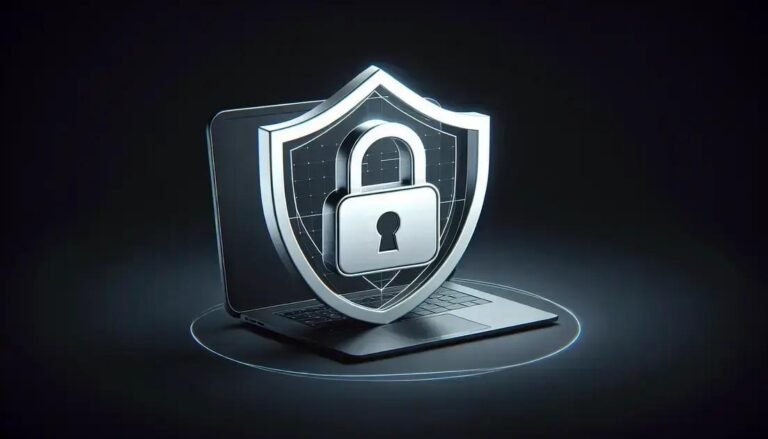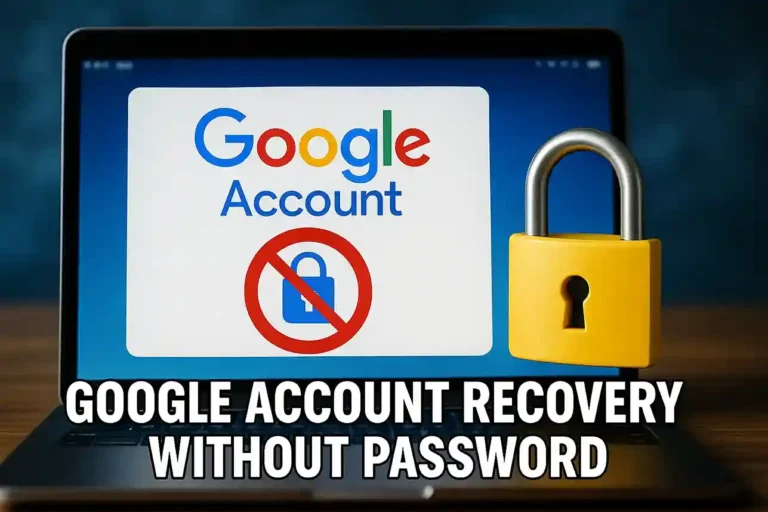How to Recover My Gmail Account: quick guide for users
Learning how to recover my Gmail account becomes essential when you lose access to your primary email.
Discover proven methods to regain control of your account without stress or complicated technical procedures.
You will remain on the current site.
Start following these recovery steps today and restore your email access within minutes using Google’s tools.
Understanding Gmail Account Recovery Options
Gmail provides multiple recovery pathways designed to help users regain access to their accounts through various verification methods and security measures.
The recovery process starts by visiting the Gmail sign-in page and clicking the “Forgot password” link, which triggers Google’s automated recovery system.
Your success depends on having previously set up recovery information like backup emails, phone numbers, or security questions during account creation.
Primary Recovery Methods Available
Google offers several authentication options to verify your identity and restore access to your locked or forgotten Gmail account effectively.
The most common recovery approaches include phone verification, backup email confirmation, and answering previously configured security questions about your account.
Each method requires different information, so understanding your options helps you choose the fastest path to recover Gmail password successfully.
Step-by-Step Password Recovery Process
Begin the recovery process by navigating to accounts.google.com and entering your Gmail address in the provided field for account identification.
Click “Forgot password” when prompted, then select your preferred verification method from the available options Google displays on your screen.
Follow the on-screen instructions carefully, as each step builds upon the previous one to ensure secure account restoration and prevent unauthorized access.
Using Phone Number Verification
Phone verification remains the quickest way to how to recover my Gmail account when you have access to your registered mobile device.
Google sends a verification code via SMS or voice call to your previously registered phone number within seconds of requesting recovery.
Enter the received code into the recovery form, then create a new password following Google’s security requirements for strong authentication.
Recovery Email Method
Backup email recovery works when you previously added an alternate email address to your Gmail account security settings during setup.
Check your backup email inbox for a message from Google containing a verification link or code needed to proceed with recovery.
Click the provided link or enter the code, then follow the prompts to reset your password and regain access to Gmail.
Alternative Recovery When Phone Access is Lost
Losing your phone doesn’t mean permanent account loss, as Google provides alternative methods to fix Gmail without phone verification available.
The account recovery form allows you to provide detailed information about your account history, recent emails, and other identifying details.
This manual review process takes longer but offers hope when traditional recovery methods aren’t available to you anymore.
Using Account Recovery Form
Access the detailed recovery form by selecting “Try another way” when phone verification fails during your initial recovery attempt.
Provide accurate information about when you created the account, recent passwords you remember, and frequently contacted email addresses from your account.
Google’s security team reviews submissions manually, so detailed and accurate responses increase your chances of successful account restoration significantly.
The information they typically request includes:
- Last password you remember using
- Date when you created the account
- Recent emails you sent or received
- Frequently used Google services
- Recovery email addresses you may have used
Recovering Lost Email Data and Messages
After regaining access, you might discover that some emails appear missing or that your lost email Gmail content needs restoration from backups.
Gmail automatically saves most data, but checking your trash, spam, and archived folders helps locate messages you thought were permanently deleted.
Use Gmail’s search function with specific date ranges, sender names, or keywords to locate important messages that may have been misplaced.
Checking Hidden Email Locations
Many users overlook Gmail’s organizational folders where missing emails often reside, including spam, trash, and automatically created labels.
Navigate through each folder systematically, as Gmail’s filtering system sometimes incorrectly categorizes legitimate emails as spam or promotional content.
The “All Mail” folder contains every message in your account, making it the most comprehensive location to search for lost communications.
Resetting Security Settings After Recovery
Successful account recovery requires immediate attention to reset Gmail security settings and prevent future lockouts or unauthorized access attempts.
Update your recovery information, including phone numbers, backup emails, and security questions to reflect your current contact details accurately.
Enable two-factor authentication as an additional security layer that protects your account from future compromise while maintaining easy access.
Essential Security Updates
Visit your Google Account security settings immediately after recovery to review and update all authentication methods and recovery options available.
Change your password to something unique and strong, avoiding previously used passwords or easily guessable combinations that compromise security.
Review recent account activity to ensure no unauthorized access occurred while your account was compromised or inaccessible to you.
Key security settings to update include:
- Primary recovery phone number
- Backup email address
- Two-factor authentication setup
- App-specific passwords
- Connected devices and applications
Troubleshooting Common Recovery Issues
Recovery attempts sometimes fail due to outdated information, network problems, or security restrictions that require specific troubleshooting approaches.
Clear your browser cache and cookies before attempting recovery, as stored data sometimes interferes with Google’s authentication process.
Try using a different browser or device if repeated attempts fail, as technical issues sometimes prevent successful completion of recovery procedures.
When Standard Methods Don’t Work
Persistent recovery failures often indicate that your account requires manual review by Google’s security team through their specialized support channels.
Document all attempted recovery methods and error messages you receive, as this information helps support representatives understand your specific situation better.
Consider whether recent travel, new device usage, or suspicious activity alerts might have triggered additional security measures requiring special attention.
Professional Gmail Recovery Tools and Support
Google provides Gmail tools to recover accounts through their official help center, community forums, and direct support channels for complex cases.
Third-party recovery tools often promise quick solutions but may compromise your account security or violate Google’s terms of service agreements.
Stick to official Google resources and verified support channels to ensure safe and legitimate account recovery without additional risks or complications.
Official Support Resources
The Google Help Center offers comprehensive guides for account recovery scenarios, including step-by-step instructions for various situations.
Community forums provide peer support where other users share successful recovery experiences and troubleshooting tips for common problems.
For business or critical accounts, Google Workspace support offers priority assistance with dedicated representatives trained in complex recovery scenarios.
Available support options include:
- Google Help Center documentation
- Community support forums
- Account recovery troubleshooter
- Business support for Workspace users
Preventing Future Account Lockouts
Proactive account management prevents future lockout situations by maintaining current recovery information and following security best practices consistently.
Regular security checkups ensure your recovery methods remain functional and that you can access backup verification options when needed.
Understanding how to recover my Gmail account helps you prepare for potential issues before they become urgent problems requiring immediate attention.
Maintenance Best Practices
Schedule quarterly reviews of your account security settings to verify that phone numbers, recovery emails, and other contact information remain current.
Test your recovery methods periodically by initiating the recovery process and ensuring you can receive verification codes or access backup accounts.
Keep a secure record of important account information, including creation dates and security question answers, in a password manager or secure location.
Conclusion
Mastering how to recover my Gmail account ensures you’re prepared when unexpected lockouts threaten access to your important communications and data.
Following these proven recovery methods and maintaining updated security information provides reliable protection against permanent account loss or extended downtime.
Take action today to review your current Gmail security settings and implement the preventive measures that safeguard your email access long-term.
Frequently Asked Questions
How long does Gmail account recovery typically take?
Most recovery attempts complete within minutes when using phone or email verification, though manual reviews may require 3-5 business days for processing.
Can I recover my Gmail account without access to my phone number?
Yes, you can use backup email verification, account recovery forms, or previously set security questions to regain access without phone verification.
What happens if I don’t remember any recovery information?
Google’s detailed recovery form allows you to provide account history information like creation dates, recent contacts, and usage patterns for manual review.
Is it safe to use third-party Gmail recovery tools?
No, stick to official Google recovery methods as third-party tools may compromise your account security or violate Google’s terms of service agreements completely.
How can I prevent future Gmail account lockouts?
Maintain current recovery information, enable two-factor authentication, use strong passwords, and conduct regular security reviews of your account settings and activity.






